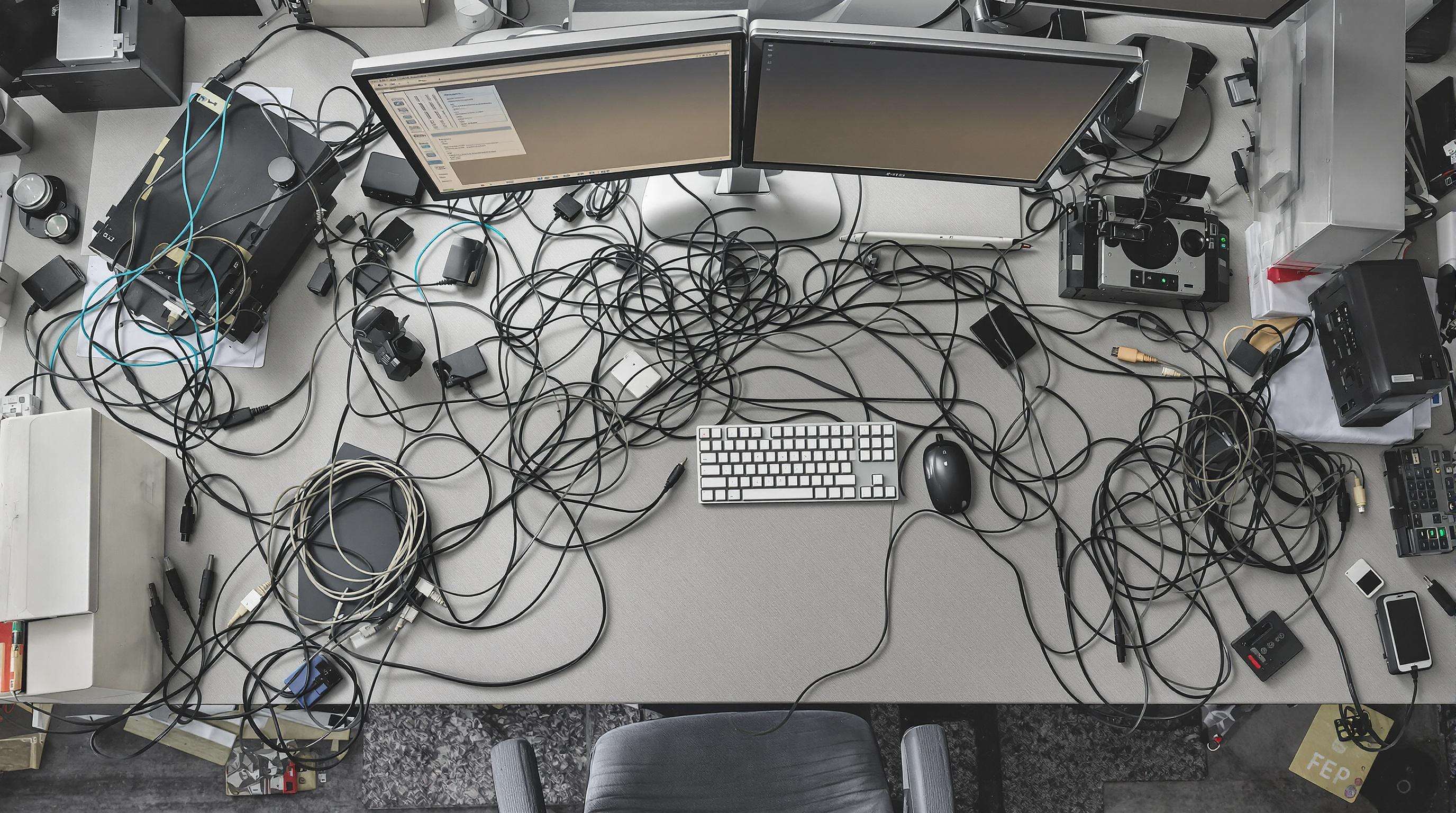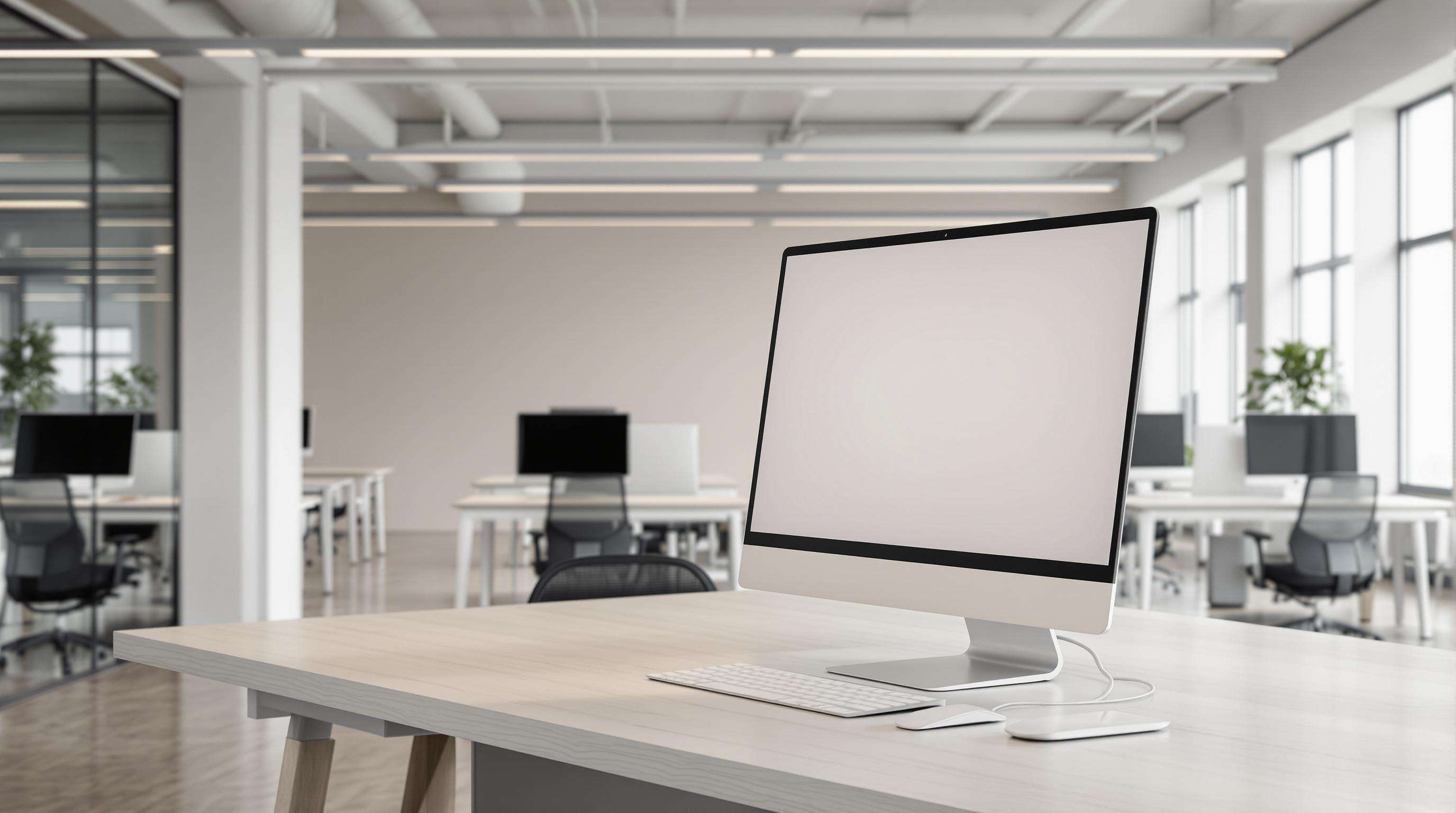
Workstations that have separate monitors, computers, and all those extra gadgets typically end up needing around 15 cables or more. Think about it: power cords, HDMI cables running everywhere, plus all sorts of USB connections just lying around. According to the latest IT Efficiency Report, employees spend about nine minutes every day dealing with setting these things up and fixing problems when something goes wrong. The mess really affects how productive people can be. A recent survey found that nearly seven out of ten workers who deal with multiple devices get distracted because they're constantly having to sort out cable issues or troubleshoot connections. That's why many offices are turning to all-in-one systems now. These setups cut down on the chaos by connecting everything through just one cable, making life much easier for teams working together in open spaces or companies that practice hot desking arrangements.
Old fashioned desktop setups end up costing about 43% more each year in support expenses compared to all-in-one systems because of those pesky compatibility problems between parts and dealing with multiple warranty providers according to Gartner's 2023 report. Tech support staff waste around 17 hours every month just troubleshooting problems across 50 machines. They spend their time fixing broken monitors, sorting out graphic card conflicts, or dealing with faulty peripherals - issues that basically never happen with these integrated all in ones. And let's not forget about power consumption either. Regular workstations eat up about 89 watts per hour while modern AIOs only need 54 watts. That might not sound like much at first glance, but it really adds up when looking at long term energy bills.
A 100-employee architecture firm reduced first-year hardware costs by $31,200 after switching to business all-in-one PCs. The breakdown highlights key savings:
| Cost Factor | Mini PC + Monitor Setup | AIO System |
|---|---|---|
| Initial Hardware | $82,400 | $79,100 |
| IT Setup Labor | 127 hours | 39 hours |
| Cable Management | $3,810 | $740 |
| Year 1 Support Cases | 291 | 104 |
The 3-year TCO (Total Cost of Ownership) was 28% lower with AIOs, driven by reduced maintenance and space optimization.
All-in-one business PCs cut down on the headache of dealing with different vendors for every component, giving companies just one person to call when something goes wrong with either hardware or software. According to TechSolve's findings from last year, businesses that switched to these systems saw their IT response times drop by around 35%. When it comes to keeping everything updated, these AIO setups make life easier too. The centralized update process means far fewer compatibility problems down the road. We've actually seen top models need about half as many patches compared to regular desktop computers, which saves time and frustration for everyone involved.
According to some recent tests run by enterprise IT departments, setting up all-in-one computers actually saves about 72% of the time compared to putting together regular desktop towers plus all those extra peripherals. These pre-built systems let companies use what's called zero touch deployment, basically meaning gadgets arrive at remote employees doorsteps already configured and ready to go right out of the box. Take one insurance company with around 500 staff members who switched to this method. They used to spend nearly an hour getting each new workstation going, but now it only takes about nine minutes total when people start working from home or hybrid arrangements.
A logistics company replaced 1,200 legacy desktops with AIOs across 37 branches, cutting first-year IT labor costs by $216,000. Remote diagnostics resolved 89% of employee-reported issues without on-site visits, while unified driver packages eliminated configuration errors across locations.
Implement a three-phase transition:

All-in-one business PCs get rid of those bulky towers, extra monitors, and messy cables that take up so much space on desks. In busy workspaces, these systems can free up around 40% of surface area according to some estimates. The sleek look makes them great for hot desking situations where people move between stations throughout the day. Less visual clutter means workers aren't constantly distracted by equipment, something research from several workplace studies has pointed out actually boosts concentration levels by about 18% in open plan offices. Plus, when everything is built into one unit with proper cable routing, there's just less chance of someone tripping over wires or IT staff having to spend time untangling knots every week.
AIOs these days are pretty slim, usually something like 2 inches thick or so, which makes them great for small home offices or those shared workspaces everyone's talking about now. They're not like those big old desktop towers that take up half the room. With AIOs, it's much easier to switch back and forth between working alone and team projects without moving mountains of equipment around. The newer models come with components that actually save quite a bit of electricity when compared to having separate devices everywhere. Plus, all those ports built right into the machine make life simpler for people who need to connect lots of different gadgets while working from home some days and the office others.
Conventional desktop setups accumulate hidden costs over time. A 2023 IT expenditure study found companies spend 30% more on peripheral replacements and system updates than Business All-in-One PC users. Multi-component systems often require:
These factors contribute to a 3-year TCO that’s 38% higher than integrated systems, according to enterprise IT cost benchmarks.
Business All-in-One PCs reduce operational expenses through consolidated hardware. Key savings include:
| Cost Category | AIO Systems | Traditional Desktops |
|---|---|---|
| Annual Energy Use | 145 kWh | 210 kWh |
| Maintenance Tickets | 4.1/device | 9.7/device |
| Cable/Adapter Costs | $12/unit | $87/unit |
Integrated designs reduce failure points by 63%, while single-source warranties cut support costs by $160/device annually (2023 Workplace Technology Report).
AIOs achieve breakeven ROI within 18–24 months for most mid-sized businesses. Key contributors include:
Recent industry analysis shows organizations with 200+ AIOs save $144,000 yearly in IT labor and $29,000 in electricity compared to traditional configurations.
Business all-in-one PCs have put to rest those old worries about their performance capabilities. According to a recent Forrester report from 2023, nearly nine out of ten IT managers saw no drop in productivity, and often even improvements, after switching to these systems for heavy workloads such as complex financial models or CAD applications. Why? Manufacturers have gotten much better at managing heat inside these machines, plus they now come with processors specifically designed for continuous high performance instead of just quick spikes of power.
Selecting the right AIO means aligning specs with real-world needs:
Manufacturers now embed desktop-class GPUs like NVIDIA RTX A2000 into ultrathin AIO chassis, achieving 40% smaller footprints than equivalent tower setups (2024 Workplace Tech Report). The shift to hybrid architectures—combining performance and efficiency cores—reduces energy use by up to 35% compared to traditional multi-component systems.
All-in-One PCs offer reduced cable clutter, lower operational costs, and improved energy efficiency. They simplify IT management by consolidating hardware, have a lower total cost of ownership, and enhance space efficiency in compact work settings.
These systems minimize distractions from multiple devices and cables, reduce setup and troubleshooting time, and provide streamlined operations, which boost productivity in shared and open office environments.
Switching to All-in-One PCs can result in significant cost savings, including reduced first-year hardware expenses, lower cable management costs, and fewer maintenance tickets, resulting in a lower total cost of ownership over time.
Modern All-in-One PCs have addressed previous performance concerns. They now feature powerful processors, efficient heat management, and are equally capable of handling demanding workflows as traditional desktops.
